Artemis, in the Greek religion, was the daughter of Zeus and Leto and the twin sister of Apollo. Among the rural population, Artemis was the favourite goddess.
Her character and function varied greatly from place to place, but apparently behind all the forms was the goddess of wild nature, who danced, usually accompanied by nymphs, in mountains, forests and swamps. Artemis embodied the ideal of the sportsman, so in addition to killing the game, she also protected it, especially the young.
Meaning of the Goddess Artemis
The goddess of wild animals, hunting and vegetation, and chastity and childbirth
Who is the Goddess Artemis ?
The worship of Artemis probably flourished in Crete or on the Greek continent in pre-Hellenic times. Many of Artemis’ local cults, however, preserved vestiges of other deities, often with Greek names, suggesting that, in adopting her, the Greeks identified Artemis with the divinities of nature.
The dances of maidens representing tree nymphs (dryads) were especially common in the worship of Artemis as the goddess of tree worship, a role especially popular in the Peloponnese. Throughout the Peloponnese, with epithets such as Limnaea and Limnatis (Lady of the Lake), Artemis oversaw the waters and lush wild growth, which was attended by well and spring nymphs (naiads). In parts of the peninsula, her dances were wild and lewd.
Outside of the Peloponnese, Artemis’ most familiar form was that of the Mistress of Animals. Poets and artists usually depicted her with the deer or the hunting dog, but the cults showed considerable variety. For example, the festival of Tauropolia at Halae Araphenides in Attica honored Artemis Tauropolos (Bull Goddess), who received a few drops of blood drawn by the sword from the neck of a man. The frequent stories of the love affairs of the Artemis nymphs are supposed to have been originally told about the goddess herself.
The poets after Homer, however, emphasized Artemis’ chastity and her delight in hunting, dancing and music, the shadow groves and the cities of righteous men. Artemis’ anger was proverbial, as the myth attributed the hostility of the wild nature to the humans.
However, Greek sculpture avoided Artemis’ relentless anger as a motif; in fact, the goddess herself did not become popular as a subject in the great sculptural schools until the relatively gentle spirit of the fourth century BC prevailed.
What Attributes Does the Goddess Artemis Have ?
According to Greek mythology, Artemis was the daughter of Leto and Zeus, and had a twin brother, Apollo. When Zeus’ wife Hera found out about Leto’s pregnancy, Hera sent a serpent monster, Python, to chase Leto away from Greece.
In an interpretation of the myth, Leto gave birth to Artemis one day before she gave birth to Apollo. Immediately after she was born, Artemis helped her mother cross a stretch of sea to the island of Delos, where Leto gave birth to Apollo the next day.
This myth helps to explain how Artemis came to be considered the patron god of childbirth and the protector of pregnant women. Artemis is usually depicted as a girl wearing a knee-high robe and armed with her bow and arrow. She is often shown accompanied by forest creatures like deer and bears. When traveling, Artemis rides a cart pulled by four silver deer.
What is the Power of the Goddess Artemis ?
Like all the Greek Olympian gods, Artemis was immortal and very powerful. Her special powers included perfect aim with bow and arrow, ability to turn herself and others into animals, healing, disease and control of nature.
History of the Goddess Artemis
Birth of Artemis
When the goddess Titan Leto became pregnant with Zeus, Zeus’ wife Hera was very angry. Hera put a curse on Leto that prevented her from having her babies (she was pregnant with twins) anywhere on earth. Leto finally found the secret floating island of Delos, where she had the twins Artemis and Apollo.
Six wishes
When Artemis turned three, she asked her father Zeus for six wishes:
- Never to marry.
- To have more names than her brother Apollo.
- To have a bow and arrows made by the Cyclops and a knee-high hunting robe to wear.
- To bring light into the world.
- To have sixty nymphs for friends to look after their dogs.
- To have all the mountains as their domain.
Zeus couldn’t resist his little girl and granted her every wish.
Orion: One of Artemis’ best friends was the giant hunter Orion. The two friends loved to hunt together.
However, one day, Orion boasted to Artemis that he could kill all the creatures on Earth. The goddess Gaia, Mother Earth, heard the boast and sent a scorpion to kill Orion. In some Greek stories, it’s actually Artemis who ends up killing Orion.
A Greek myth tells the story of two huge giant brothers called the giants Aloadae. These brothers grew up very big and powerful. So powerful that even the gods began to fear them.
Artemis discovered that they could only kill each other. She disguised herself as a deer and jumped among the brothers while they were hunting. They both threw their spears at Artemis, but she dodged the spears just in time. The brothers ended up beating and killing each other with their spears.
Not only did Artemis care for her own purity; she also defended the innocence of her worshippers. And she was ruthless if any of her priestesses ever lost it. For example, after her hunting assistant, Callisto gave birth to Zeus’ son, Arkas, Artemis made an effort with Hera to turn her into a bear.
The plan was for Arcas to kill her. However, just when that was about to happen, Zeus placed both of them in the sky as the constellations of Ursa Major and Ursa Minor. Just as he punished the transgressors of the sacred vow, Artemis rewarded those who kept it. To devote himself to a chaste life, Hippolytus despised Aphrodite, after which the goddess of love made his stepmother fall in love with him.
This established a chain of events that led to Hippolytus’ death. However, Artemis invoked Asclepius and resurrected Hippolytus as a new man, who later ruled in Italy under the name of Virbius.
Myths About Goddess Artemis
Artemis and Niobe
In Greek mythology, the daughter of Tantalus (King of Sipylus in Lydia) and the wife of King Amphion of Thebes, Niobe. She was the prototype of the grieving mother, crying for the loss of her children. According to Homer’s Iliad, she had seven sons and seven daughters and boasted of her progenitorial superiority to the Titan Leto, who had only two sons, the twin deities Apollo and Artemis.
Artemis and Apollo, murdered all of Queen Niobe’s children, shooting them with poisoned arrows, after she boasted how she was older than Leto, her mother, because she has 14 children, seven of each gender. While Leto, she only had two.
As punishment for her pride, Apollo killed all of Niobe’s sons, and Artemis killed all of her daughters. The bodies of the dead children lay for nine days without being buried because Zeus had turned all the Thebans into stone, but on the tenth day they were buried by the gods.
Artemis and Agamemnon
When Paris (Alexander), son of King Priam of Troy, took Helen away, Agamemnon called on the princes of the country to join in a war of revenge against the Trojans. He himself provided 100 ships and was chosen as the commander-in-chief of the combined forces.
The fleet gathered at the port of Aulis in Boeotia, but was prevented from sailing by the calm or contrary winds sent by the goddess Artemis because Agamemnon had offended her in some way. To appease Artemis’ anger, Agamemnon was forced to sacrifice his own daughter, Iphigenia.
Artemis deliberately prevented the winds from preventing Agamemnon from leaving with his ships to fight Troy and, in addition to boasting that he was a better hunter than she was, he killed a sacred animal and demanded that he sacrifice his young daughter, Iphigenia, to her, in exchange for good winds.
He accepted and tricked his wife into releasing her daughter under the pretext that he was going to marry her off to Achilles, the prince of Myrmidon, and good winds were given to him. In the end, Clytemnestra, Agamemnon’s wife, on her return from the war, murdered him along with the help of her lover, Aegisthus, for the deception and murder of her daughter.
Artemis and Orion
Some legends have him as the son of Poseidon. He is associated with the island of Chios, from where he is said to have led the wild beasts. There he fell in love with Merope, daughter of the king of Chios, Oenopion. The king, who disapproved of Orion and continually postponed the nuptials, eventually had Orion blinded.
His vision restored by the rays of the rising sun, Orion is said to have gone to Crete to live with Artemis as a hunter. Accounts of his death vary widely: some legends have Artemis kill him for trying to rape her, others about Apollo’s jealousy for Artemis’ love of Orion. Other legends have him killed by a monstrous scorpion. After his death, he was placed among the stars, and can be identified by his staff, the lion’s skin, the sash.
Artemis and Arethusa
The god of the river Alpheus fell in love with Arethusa, who was in Artemis’ entourage. Arethusa fled to Ortigia, where she was transformed into a spring. Alpheus, however, made its way under the sea and joined its waters with those of the spring.
According to Ovid’s Metamorphoses, the book V, Arethusa, while bathing in the river Alpheus, was seen and pursued by the river god in human form. Artemis turned it into a spring which, flowing underground, emerged in Ortigia.
In an earlier form of the legend, it was Artemis, not Arethusa, who was the object of the river god’s affections and who escaped by staining her face with mud, so that she did not recognize her. The story probably originated from the fact that Artemis was worshipped both in Elis and in Ortigia and also that the Alpheus at its top runs underground.
Artemis and Acteon
When Acteon, a Theban hunting prince, accidentally came upon a grove containing a pond in which he was bathing, he transformed it into a deer, for he had seen what no man should have seen, and after that Acteon, was torn apart by his own dogs, that very day.
Artemis and the Wild Boars
Artemis was also responsible for Calidon’s famous boar hunt, because she sent the boar out to devastate the countryside, as a punishment for the king of the country who does not honour her at a banquet.
Sons of the Goddess Artemis
Did she give birth to any children? No. She was a virgin goddess, often depicted as a child. Virgin maidens, however, were considered the goddess’ daughters. The ancient Greeks practiced a ritual in which they sent girls to a temple in the desert of Artemis and let them run around naked (to get out of the madness), and when the period of the ritual was over, the girls were considered women.
Moreover, Artemis was the goddess of hunting and was in charge of the Hunters of Artemis as well as the Amazons, these groups were formed by young women who mocked the men and kept themselves pure. These were also considered to be Artemis’ daughters.
Temples of the Goddess Artemis
Temple of Artemis, also called Artemesium, temple in Ephesus, now in western Turkey, which was one of the Seven Wonders of the World. The great temple was built by Croesus, king of Lydia, around 550 BC and was rebuilt after being burned by a madman named Herostratus in 356 BC.
The Artemesium was famous not only for its large size, more than 350 by 180 feet (about 110 by 55 meters), but also for the magnificent works of art that adorned it. The temple was destroyed by the invading Goths in 262 CE and was never rebuilt.
Small remains of the temple (although there are many fragments, especially of carved columns, in the British Museum). The excavation has revealed traces of the Croesus temple and of the 4th century and three smaller earlier ones. Copies of the famous statue of Artemis survive, a non-Greek representation of a mummy-like goddess, standing rigidly straight with her hands outstretched.
The original statue was made of gold, ebony, silver and black stone. The legs and hips were covered by a garment decorated with reliefs of animals and bees, and the upper body was adorned with many breasts; her head was adorned with a headdress of high pillars.
The temple of Artemis is known as one of the Seven Wonders of the ancient world. It has been built in the areas of Ephesus on a flat area that over the centuries has become a swamp. If you visit Ephesus today, you will only see the ruins of the foundations of this wonderful Hellenistic Age construction, made entirely of marble and filled with capitals and sculpted columns.
The most beautiful remains of this temple are on display today at the British Museum in London. The oldest found date back to the 6th century BC. It was surrounded by 36 huge columns, which were later extended by order of King Lydia, Kreisos, during the 6th century BC. Most of the exhibits in the British Museum in London belong to this period.
The new Artemis was rebuilt in the 2nd century BC. Located on top of the previous one, it had tremendous dimensions: 127 columns every 17.5 meters high. Unfortunately, this one has also been destroyed by a fire, rebuilt and demolished again by earthquakes, rebuilt and finally looted by the Goths one year later.
The multi-breasted statue of Artemis was the symbol of the temple, but also of abundance, hunting and wildlife. The genuine statue of Artemis, removed during the fire, is on display today at the Selcuk Museum. Many copies of this statue found during the latest excavations date back to Roman times.
Related Topics
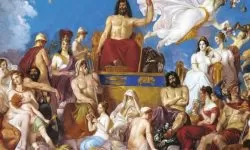
OLYMPUS GODS NAMES: Zeus, Hera, Poseidon, Ares
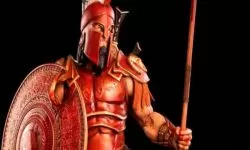
💚 WHO IS ARES ? God of War, Son of Zeus and Hera
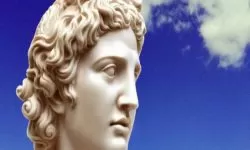
APOLLO MEANING: Olympic God of Sun and Light
Other Gods of Mythology in ALPHAPEDIA
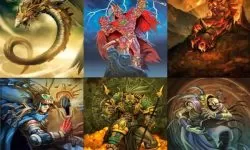
AZTEC GODS: List of Names, Meanings and Powers
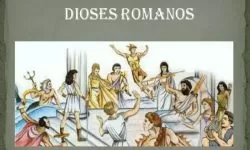
ROMAN GODS: Names, Meanings and Characteristics
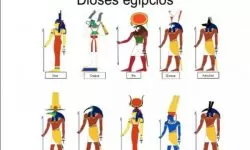
EGYPTIAN GODS: Their Names and Meanings
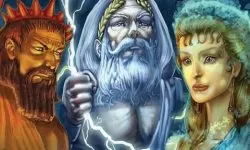
GREEK GODS: Names, Family Tree and Their Powers
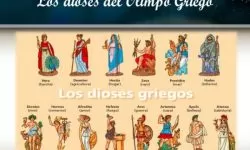
OLIMPUS GODS: ¿ Who Are ? ¿ What Are ? Names and Powers

NORSE GODS: Names, Meaning, Powers and History
Other Topics of Interest in ALPHAPEDIA

FREE DRIVING COURSE

FREE MASTER DEGREE IN ENVIRONMENTAL SCIENCES

FREE CONSTRUCTION COURSE

FREE CABINETMAKING COURSE

FREE MASTER DEGREE IN CRIMINAL LAW

FREE FILMMAKING COURSE
Images, Photos or Drawings of ARTEMIS GODDESS



